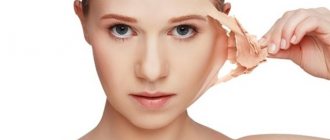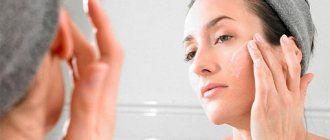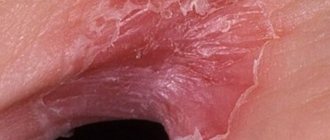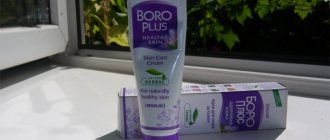The TORI aesthetic medicine clinic invites you to visit the fractional photothermolysis procedure at a reasonable price. This is a very soft, comfortable and effective method of skin rejuvenation and restoration, which is suitable for correcting any area of your body.
The procedure is performed by certified cosmetologists with more than 5 years of experience. To carry it out, modern equipment is used - the latest generation erbium laser.
Using this method, you can get rid of facial wrinkles, eliminate the effects of post-acne, age-related skin changes, stretch marks, age spots and make post-operative and traumatic scars almost invisible.
What is fractional photothermolysis
Fractional photothermolysis is a method of skin rejuvenation and restoration, during which problem areas of the skin are subjected to a targeted, dosed effect of a laser beam. The latter penetrates the skin to a depth of 1.5 to 5 mm and warms the tissue up to 60°. As a result, the structure of protein molecules is disrupted and tiny thermal damage is formed.
This activates the repair (restorative) properties of cells. They are restructured, the synthesis of collagen and elastin is launched, which provides a pronounced and completely natural lifting effect.
Restrictions
Since FF is a new technique, our results should be considered preliminary. The long-term side effects and benefits of the procedure need to be clarified. To confirm our results, it is necessary to conduct a series of long-term studies on a larger number of patients with various forms of skin diseases. The parameters of the FF procedure must be constantly refined to improve the final result and minimize patient discomfort and costs. According to the author, there is still no information on the effect of FF on erythema and telangiectasia.
The essence of the procedure
In the process of fractional photothermolysis, the laser beam is split into a wide range of microbeams (fractions). At the point of exposure to such a light beam, microthermal damage occurs. As a result, a thermochemical process is launched that restores the structure of cells.
Its external manifestations are that the skin turgor improves, it becomes elastic, radiant and toned. Scars, pigmentation and other consequences of pathological changes in cells disappear.
Immediately after the procedure, the patient's skin in the treatment area is strewn with tiny red dots. Essentially, these are microscopic, rather deep burns. In this case, the effect of large-scale thermal damage is completely absent, as if very hot water fell on an area of a similar area.
Microdamages after laser photothermolysis are absolutely painless and do not require special care.
Splitting the beam into microbeams provides an effect similar to classic laser resurfacing. However, the effect is so gentle that the patient does not require pain relief during the procedure or any rehabilitation. During fractional photothermolysis, the laser does not act on a single “spot”, as during grinding, in which entire layers of cells are removed, but forms microscopic “notches”, as a result of which the process of natural regeneration is activated.
How does the procedure work?
As mentioned above, the fractional photothermolysis procedure is very comfortable:
- The patient sits on a comfortable soft couch.
- The cosmetologist cleanses the skin in the treatment area from contaminants (dust, sweat), if necessary, performs makeup removal and treats the area with an antiseptic.
- The device is configured in accordance with the objectives of the procedure.
- The specialist treats the problem area using a special nozzle. The maximum that the patient experiences is a feeling of intense warmth and tingling. The depth and power of the impact can be adjusted during the process if necessary.
- At the end of the procedure, the cosmetologist disinfects the treated area and applies a light soothing cream to it.
Indications for fractional rejuvenation
- Reduction of depth and complete correction of wrinkles;
- Reduction of pore sizes;
- Correction of gravitational ptosis;
- Restoring skin elasticity;
- Removal of pigment spots;
- The need to remove traces of post-acne, scar changes and stretch marks;
- Getting rid of hyper- and atrophic, postoperative and post-traumatic scars;
- Improvements in skin structure and color.
Benefits of the procedure
Fractional photothermolysis of the face and body has a number of advantages compared to other hardware techniques:
- compatibility with all skin types, including dark skin;
- delicacy and physiology - can be used in any area of the body, including bikini, under the eyes and other delicate areas;
- quick and easy recovery period (2-5 days);
- no age restrictions;
- long-lasting lifting and healing effect (3-5 years);
- moderate painlessness;
- solution to most cosmetic problems in just 20-40 minutes;
- absolute safety (impossibility of causing infection or injuring tissue);
- pronounced effect after the first session;
- noticeable improvement in appearance due to restructuring of the dermis and renewal of the collagen matrix.
After the procedure, you will not need to make significant adjustments to your usual lifestyle, and decorative makeup can be applied as early as the third day.
Fractional laser: price
Fraxel prices in Moscow for procedures differ depending on the treatment area and the type of fractional laser itself. Below we have indicated the cost of the procedure using the Fraxel restore device. Depending on the severity of skin changes, 3-5 procedures may be needed to achieve the desired result.
Fractional laser: procedure price
- the entire face, including eyelids, will average 25,000 - 30,000 rubles,
- only crow's feet near the eyes - about 4500-6000 rubles,
- nasolabial triangle - about 6000 - 8000 rubles.
Recovery and care after the procedure
The rate of tissue regeneration after fractional photothermolysis depends on the depth and power of laser exposure.
In order to speed up your recovery after the procedure, we recommend that you adhere to the following recommendations:
- treat the skin with a light, pore-free nourishing cream;
- wash with water at room temperature, do not rub the skin, do not use hard sponges;
- do not use peelings and scrubs for 2 weeks;
- spend less time outdoors in sunny weather in the first 2-3 weeks;
- Before going outside, even on a cloudy day, use sunscreen with an SPF of at least 30;
- do not visit the solarium or take sunbathing for 2 months;
- do not visit the bathhouse, sauna, swimming pool for a month;
- do not wear compression garments when performing the procedure on the body;
Price for services
| FRACTIONAL LASER PEELING LASER COMPLEX MULTILINE, ERB (when purchasing a course of 3 procedures - 10% discount) | |||
| № | Name | Duration | price, rub. |
| 1 | Full face | 60 min | 5000 |
| 2 | Forehead | 30 min | 1000 |
| 3 | Cheeks | 30 min | 2000 |
| 4 | Chin | 30 min | 1000 |
| 5 | Eyelids (upper, lower) | 30 min | 2000 |
| 6 | Upper lip | 20 minutes | 1000 |
| 7 | Neck | 30 min | 3000 |
| 8 | Face + neck | 60 min | 7000 |
| 9 | Cleavage | 30 min | 3000 |
| 10 | Face + neck + décolleté | 60 min | 9000 |
| 11 | Hands | 30 min | 3000 |
| FRACTIONAL LASER TREATMENT OF STRETCH MARKS (STRETCH MARKS) LASER COMPLEX MULTILINE, ERB | |||
| 12 | Stomach | 60 min | 5000 |
| 13 | Hips | 60 min | 5000 |
| 14 | Breast | 30 min | 3000 |
| 15 | Back | 30 min | 5000 |
| 16 | 1 sq. cm | 10 min | 500 |
Possible complications and consequences
Our patients have never contacted us with complaints of side effects. However, in general practice the following cases are very rare, which mainly occur due to the incompetence of the specialist or when the patient has contraindications to the procedure:
- Thermal damage to the skin when the recommended parameters of laser exposure are exceeded. In this case, it is recommended to use drugs with anti-inflammatory and epithelializing effects and prevent hyperpigmentation.
- Mild hyperemia (redness of the skin due to blood flow to the treated area), which goes away without a trace within 1-2 days.
- Local swelling, which also goes away on its own within the first 24 hours.
- Light flaking and dry skin, which can be eliminated with a nourishing cream.
- A slight burning sensation that goes away on the day of the procedure. To reduce discomfort, you can apply an ice compress or put on a hydrogel mask.
As we said above, the listed side effects are usually consequences of unprofessional conduct of the procedure. When undergoing a procedure at the TORI aesthetic medicine center, you are insured against such unpleasant surprises.
Contraindications
Fractional thermolysis has several contraindications. In particular, it is prohibited to carry out when:
- Self tanning
- Pregnancy and lactation
- Installed pacemaker
- Cancer diseases
- Atopic dermatitis in the acute stage
- Psoriasis, diabetes, autoimmune diseases
- Active herpes, with rashes
- Pustular infection in treatment areas (face, décolleté, neck, hands).
The age limits established for thermolysis are very wide: from 25 to 70 years, which indicates the safety of this procedure. Also in its favor is that only thermolysis is done on the lower and upper eyelids, in the area of crow’s feet, and other areas previously prohibited for treatment.
Individual consultation
Types of fractional photothermolysis
Fractional photothermolysis comes in two types:
- Ablative. The laser affects only the upper layers of the skin, at a depth of up to 1.5 mm. After the procedure, tiny wounds similar to red dots are visible on it. As a result of microdamage, the process of collagen and elastin production is launched, and the process of powerful cell regeneration is activated. The skin is noticeably tightened. Recovery takes a little longer than using a non-ablative method, but the effectiveness is slightly higher.
- Non-ablative. The laser affects the middle layer of the dermis (3-5 mm). Damage to the epidermis is so minor that it is invisible to the naked eye. Microthermal treatment zones are formed under the skin. As a result, the middle layer of the dermis is restructured and renewed. The first results can be seen two weeks after the procedure - wrinkles will gradually begin to smooth out. A pronounced effect will occur in a few months.
Non-ablative fractional photothermolysis is effective in preventing premature aging. The procedure is recommended for use at the age of 25-40 years.
Fractional laser technologies: a trade-off between effectiveness and safety
Today, the arsenal of modern dermatocosmetology has a fairly wide range of methods for correcting various aesthetic imperfections of the skin - chemical peels, mechanical dermabrasion, laser resurfacing, microdermabrasion, contouring, etc. However, new trends and technologies in the beauty industry are constantly developing and improving.
This trend is especially characteristic of hardware methods, primarily laser medicine. The use of lasers, first in dermatology and then in cosmetology, has an impressive history. Even since the advent of one of the newest methods of laser treatment - selective photothermolysis - more than 25 years have passed. The pioneers of this trend, the Americans RR Anderson and JA Parrish, predetermined the fate of fractional lasers in medicine, making them indispensable in the treatment of such aesthetic skin imperfections as capillary hemangiomas. port-wine stains, hypertrichosis, tattoos, rosacea, pigment disorders, photoaging, wrinkles, etc.
O. Sheptiy, specialist in the field of laser dermatology and surgery, chief physician of the Telos Beauty Prof. high-tech clinic, Moscow, Russia
Modern methods of skin remodeling
We live in a time when more people are living into old age than ever before. And given that many of them continue to live an active life, one of the most important problems in aesthetic medicine is the fight against aging skin.
Plastic surgery can rejuvenate the shape of the face by eliminating excess skin. However, the skin still remains changed by time (ageing) or external factors (photoaging). It is also important that most patients want to look younger without surgery.
In this case, what method should be used to influence the skin and what should happen in it for its real rejuvenation?
All methods that can be used to improve the appearance of the skin are united by one principle - they use a traumatic effect on the skin, provoking fibrosis, which subsequently leads to its tension and thickening.
Nowadays in dermatocosmetology there are three main types of remodeling effects on the skin, including:
- chemical stimulation - chemical peelings with acids (trichloroacetic, glycolic, etc.);
- mechanical stimulation – mechanical dermabrasion, microdermabrasion, mesotherapy, fillers, subcision using needles;
- thermal stimulation - laser ablation, thermal lifting using lasers and broadband light sources, radio frequency lifting, fractional methods.
Chemical stimulation
Historically, acid exfoliation (peeling) was the first method of skin rejuvenation. The principle of peeling is partial (as with superficial peeling) or almost complete (as with medium and deep peelings) destruction of the epidermis, damaging fibroblasts and dermal structures. This damage activates an inflammatory reaction (the more powerful the greater the volume of destruction itself), which leads to additional production of collagen in the skin.
However, to achieve the desired result, the epidermis has to be sacrificed when peeling. Experiments with burns have misled many, allegedly “proving” that the epidermis is a self-renewing organ that quickly regenerates over the damaged area. In this regard, peelings for some time became more and more aggressive towards the epidermis (for example, deep phenolic peeling), until finally the accumulated problems made specialists realize the depravity of this method, which ultimately leads to thinning of the skin.
Proponents of deep peeling ignored the problems that arose. Their essence was that due to the destruction of the papillae of the dermis and weakening of nutrition, the epidermis becomes thinner, and the number of cells in the spinous layer is significantly reduced compared to what it was before peeling. A decrease in the barrier function of the stratum corneum leads to a decrease in skin hydration. (Therefore, almost all patients after deep peeling experience severe dry skin for a long time) At the same time, the introduction into practice of lighter peelings (using trichloroacetic and fruit acids) did not live up to the hopes placed on them associated with effective skin tightening.
Mechanical stimulation
Among the methods of mechanical stimulation of involutional changes in the skin, dermabrasion using rotary devices (with a speed of rotation of cutters up to 100,000 rpm) deserves special attention. Currently, modern Schumann-Schreus apparatuses (Germany) are used.
The method can only be used in a surgical hospital, since the procedure requires anesthesia, postoperative treatment of the wound surface, a special toilet for the eyes and mouth, as well as devices for feeding patients (due to the fact that pronounced postoperative swelling that occurs 2-3 days after the procedure, makes it difficult to open the eyes and mouth).
The method is very effective, but, unfortunately, with mechanical dermabrasion there is a high risk of complications such as:
- persistent postoperative hyperemia;
- the appearance of areas of depigmentation due to the destruction of melanocytes when the cutter penetrates the basement membrane;
- infection of the wound surface;
- formation of scars (with excessive depth of immersion of the cutter into the skin).
All of the above has determined the limited use of this method in clinical practice.
Thermal stimulation
Ablative remodeling
Since the late 1980s, lasers have been used to rejuvenate the skin by layer-by-layer tissue removal (ablation) [4]. Careful, low-traumatic removal of the surface layer of skin using a carbon dioxide laser stimulates the synthesis of its own collagen, the amount of which increases several times after the procedure. Then its reorganization gradually occurs.
The most effective was the use of a CO2 laser, which produces a deep thermal effect on all layers of the dermis, which is externally manifested by the effect of skin tightening. The method was called “laser dermabrasion” or “laser resurfacing”, and in terms of effectiveness it could not be compared with any other method of skin rejuvenation that existed at that time (Fig. 1).
Rice. 1. Scheme of traditional laser skin resurfacing (laser dermabrasion)
However, the CO2 laser also causes a large number of complications. In addition, further studies have shown that such a deep effect on the dermis stimulates the formation of fibrous tissue to a greater extent than it promotes the synthesis of new, normally oriented collagen [5]. Developed fibrosis can give the skin an unnatural pallor. The collagen synthesized after treatment is resorbed after a few years, like any collagen formed at the site of the scar. As a result of thinning of the epidermis caused by atrophy of the papillary dermis, fine wrinkles begin to appear on the skin. Due to the weakening of the barrier function of the stratum corneum, the level of hydration of the skin decreases, and it looks atrophic.
Somewhat later, laser systems based on erbium-yttrium aluminum garnet (erbium lasers) appeared. Such advantages of the erbium laser as a smaller depth of thermal penetration (erbium lasers penetrate to a depth of 30 microns, CO2 lasers - up to 150 microns) and (as a result) a lower risk of burns and carbonization of tissue, as well as relative low cost (compared to carbon dioxide lasers) , attracted the attention of many experts around the world.
Nevertheless, as experience has accumulated in working with these two types of installations, experts have formed the opinion that CO2 lasers are more effective [6]. Despite the negative consequences of carbon dioxide laser dermabrasion described above, this method remains indispensable for the correction of acne scars. In addition, it can be considered as an alternative to surgical skin tightening - of all the methods of skin remodeling, only CO2 laser exposure can actually cause a pronounced contraction of collagen with a visible clinical lifting effect.
The problem with all the methods described above is that they often “sacrifice,” that is, significantly damage the epidermis. In order to rejuvenate the skin and really look young, you need an ideal epidermis with natural dermal papillae, good hydration, normal skin color and elasticity. The epidermis is a very complex, highly specialized organ, up to 200 microns thick, which is our only defense against the effects of negative environmental factors. Therefore, no matter what we do to rejuvenate the skin, we must be sure that its underlying normal architecture is never damaged.
This concept contributed to the emergence of non-ablative skin remodeling technology.
Non-ablative remodeling
The most common devices for non-ablative skin remodeling are neodymium (Nd-YAG) and diode lasers, as well as broadband light sources (IPL). The principle of their action - selective photothermolysis - is to heat and destroy structures containing a sufficient amount of melanin or oxyhemoglobin. In the skin, these are, respectively, accumulations of melanocytes (lentigo, melasma) and microvessels (telangiectasia). The emitted wavelengths used in non-ablative lasers correspond to the maxima of the absorption spectra of oxyhemoglobin or melanin. The treatment procedure with non-ablative lasers and IPL is quite safe, the rehabilitation period is minimal, however, such treatment only eliminates pigmentary and vascular cosmetic defects. In this case, a certain thickening of the skin is noted, but the resulting effect is short-lived.
Fractional skin remodeling methods
The constant search for new highly effective and at the same time safe methods of skin rejuvenation has led to the emergence of a revolutionary technology - fractional delivery of laser radiation. The proposed skin rejuvenation method was specifically designed to overcome some of the above difficulties. Unlike “conventional” ablative and non-ablative laser techniques, which are designed to achieve uniform thermal damage to the skin at a specific depth, fractional methods achieve selective microscopic thermal damage in the form of numerous altered columns and leave the areas around these micro-wounds unaffected. Currently, the industry produces two types of fractional lasers: non-ablative and ablative.
The first of them uses erbium optical fiber, generating radiation with a wavelength of 1550 nm. Fractional laser forms thousands and tens of thousands of microdamages in the skin in the form of columns - microthermal treatment zones (MTZ) - with a diameter of 70-150 microns and a depth of up to 1359 microns
As a result, about 15-35 pieces of skin in the treated area are subjected to photocoagulation. The chromophore for the laser is water. Coagulation occurs mainly in the lower layers of the epidermis and dermis. The stratum corneum remains intact because it contains a relatively small amount of water, and this significantly reduces the risk of infection. Epidermal repair occurs quickly due to the small volume of damage and the short distance of migration of keratinocytes. The healing period is accompanied by moderate swelling and hyperemia, followed by peeling that appears on days 5-7. The patient practically does not lose social activity.
This technology - fractional photothermolysis (FF) - is a highly effective method of non-ablative fractional skin remodeling. To achieve the desired effect, a course of treatment is prescribed. Depending on the clinical situation, it is recommended to carry out from 3 to 6 procedures with an interval of 4-6 weeks. As with any other method of non-ablative skin remodeling, the final result can be observed only 4-8 months after the procedures (cumulative effect).
In cases where a more aggressive effect on the skin is required - to correct scars, eliminate deep wrinkles and excess skin - the fractional deep dermal ablation (FDDA) method is used, combining the advantages of a CO2 laser and the fractional principle supply of laser radiation. Unlike traditional CO2 lasers, which remove the entire skin surface layer by layer, FA installations form a huge number of microablative zones (MAL) with a diameter of up to 300 microns with a vaporization depth from 350 to 1800 microns (Fig. 5).
Rice. 5. The principle of operation of the abmi.io1sh fractional laser: the formation of microablative zones -MAZ (a); dependence of the MAZ formation depth on the laser radiation power (b)
Just as with FF, from 15 to 35% of the skin of the treated area is actually exposed (in some cases, up to 70%). Recovery after the FA procedure is faster than after layer-by-layer ablation. This is due to the fact that a significant part of the epidermis and stratum corneum remains intact. Immediately after the procedure, skin bleeding is observed for some time, but it soon stops (Fig. 6 a, b).
Rice. 6. Staged restoration of the skin after the fractional ablation procedure: view immediately after treatment (a); every other day (b); after 5 days (c); 14 days (d) after one procedure
Numerous microbruises appear in the dermis, which induce a complex cascade of changes leading to the production of new collagen. After the bleeding stops, it is necessary to remove the serous fluid remaining on the surface of the skin. Its release is observed within 48 hours after the procedure, until complete epithelization of microablative zones occurs. During this period, the patient uses special wound-healing external agents. From 3-4 days, peeling usually begins and swelling intensifies (Fig. 6 c). By day 7, these phenomena gradually subside, and the only noticeable side effect remains erythema (Fig. 6 d). The duration of the existence of erythema depends on the parameters of laser exposure and the characteristics of skin vascularization. According to the author's observations, erythema lasts no more than 3 months.
The patient’s loss of social activity after the PA procedure lasts from 5 to 10 days.
To prevent scarring and the manifestation of post-inflammatory pigmentation, it is necessary to carefully care for the skin. Decorative cosmetics can be used from 4-5 days. A prerequisite for obtaining a good result is the use of sunscreen cosmetics with a high degree of protection (SPF at least 50) for at least 3 months after the procedure. The risk of post-inflammatory pigmentation is observed in 20% of patients and, as a rule, is higher in patients with skin phototypes IV-V. This hyperpigmentation is transient in nature and can last from 1 week to 3 months, which also depends on the depth of treatment and the area of the treated area. To prevent it, external agents based on hydroquinone (4%) and tretinoin (0.1%) are prescribed 1-2 weeks before the procedure and for another 2 weeks after it. The main effects on the facial skin after the FA procedure are as follows: pronounced tightening and reduction of excess skin, smoothing the surface of wrinkled skin, as well as skin affected by acne scars, reducing dyschromia and porosity.
This method was also tested by the author and his colleagues for the removal of skin stretch marks. As clinical studies have shown, the method has demonstrated high efficiency in eliminating almost all types of stretch marks, both acquired during puberty and postpartum. It was noted that the healing processes on the skin of the body proceed differently than on the skin of the face.
Mechanism of skin remodeling using fractional lasers
Let's consider the mechanisms of skin remodeling when using fractional lasers.
After laser exposure, aseptic inflammation develops in the area of formed microwounds. The more aggressive the laser effect, the more pronounced the inflammatory reaction, which, in fact, stimulates the post-traumatic release of growth factors and the infiltration of damaged tissues by fibroblasts. The onset of the reaction is automatically accompanied by a surge in cellular activity, which inevitably leads to the fact that fibroblasts begin to produce more collagen and elastin. The skin remodeling process includes three classical regeneration phases:
- phase I - alteration (tissue inflammation). Begins immediately after damage;
- phase II - proliferation (tissue formation). Begins 3-5 days after injury and lasts about 8 weeks;
- phase III - tissue remodeling. Lasts from 8 weeks to 12 months.
It should be noted that all three phases of skin remodeling are observed both after fractional photothermolysis and after fractional ablation. But in the first case, the damaging effect of the laser is moderately aggressive, as a result of which the cascade of inflammatory changes is not too violent.
A completely different picture is observed after exposure to a fractional ablative laser. The trauma caused by this laser causes the blood vessels to rupture, and blood cells along with serum are released into the surrounding tissue. A full-fledged skin regeneration mechanism is immediately launched - alteration begins - aseptic inflammation develops. Platelets released from damaged vessels play an important role in activating blood coagulation and releasing chemotoxic factors, which in turn attract other platelets, leukocytes and fibroblasts. Leukocytes, in particular neutrophils, participate in the cleansing of destroyed tissue, removing fragments of necrotic tissue, which are partially destroyed by phagocytitis, and partially emerge on the surface of the skin in the form of microscopic debris consisting of epidermal and dermal tissue substrates and melanin - microepidermal necrotic debris (MENO).
The proliferative phase begins after approximately 5 days. During this period, neutrophils are replaced by monocytes. Monocytes, keratinocytes and fibroblasts continue to influence growth factors and at the same time be under their inverse influence. Keratinocytes stimulate epidermal growth and the release of growth factors necessary to stimulate collagen production by fibroblasts. In this phase, new blood vessels are formed, and the intercellular matrix is also intensively formed.
The last, reconstructive, healing phase after fractional laser treatment lasts several months.
By day 5 after damage, the fibronectin matrix is “laid” along the axis along which fibroblasts are aligned and along which collagen will be built. An important role in the formation of this matrix is played by transforming growth factor β (TGF-β - a strong chemotoxic agent for fibroblasts), as well as other growth factors. The main form of collagen in the early phase of wound healing is type III collagen (this type of collagen is located in the upper layer of the dermis, just below the basal layer of the epidermis). The longer the alteration phase, the more type III collagen will be produced, but in any case its amount increases extremely from 5 to 7 days after injury. Over the course of about a year, type III collagen is gradually replaced by type I collagen, which increases the strength of the skin. Blood supply gradually normalizes, the skin becomes smoother and acquires a natural color.
Comparative analysis of laser methods of skin remodeling
Summarizing the above, we present to your attention a diagram demonstrating the relationship between the effectiveness and safety of laser methods of skin remodeling.
Advantages of fractional methods of track rejuvenation. The advantages of fractional methods used in clinical practice include:
- controlled minimal damage to the skin. Histological studies performed after the procedure show an increase in the number of papillae in the dermis, which characterizes the changes that have occurred in the skin as productive regeneration;
- its effective rejuvenation: the skin becomes thicker, the production of collagen and elastin increases significantly (by more than 400% (!));
- short healing time: on average 3 days after FF and 7-14 days after FA;
- minimal risk of hyperpigmentation;
- the possibility of performing the procedure on patients with thin skin;
- the ability to have a therapeutic effect on any part of the body;
- the possibility of using lighter types of anesthesia: with fractional photothermolysis, only local application anesthesia is used; for fractional ablation, a combination of conduction and infiltration anesthesia is required;
- disappearance of telangiectasia (due to the fact that blood vessels rupture in so many places that their restoration is impossible).
Main indications for fractional treatment methods
Indications for fractional photothermolysis:
- increase in skin density in the early stages of aging. The FF procedure is relatively easy and can be performed without fear. The therapeutic effect can be exerted on the neck, décolleté, arms, abdomen, thighs, and mammary glands;
- skin photoaging;
- hyperpigmentation, melasma;
- hypertrophic scars;
- stretch marks.
Indications for fractional ablation:
- wrinkles of varying degrees of severity - from fine lines to strongly pronounced ones (in the form of furrows);
- age-related loss of skin elasticity and firmness;
- excess skin in the eyelids, neck, face (as an alternative to plastic surgery);
- uneven skin texture;
- pronounced photoaging of the skin;
- scars after acne;
- cicatricial deformation of the skin after injuries, operations;
- hyperpigmentation: melasma, lentiginosis, mottled pigmentation, etc.;
- vascular dyschromia;
- skin stretch marks;
- actinic keratosis.
Rice. 11. Hypertrophic scars. View before (a) and 6 weeks after (b) treatment using the fractional photothermolysis method
Rice. 12. Postpartum stretch marks. View before (a) and 4 weeks after (b) the third fractional photothermolysis procedure
Rice. 13. Striae after prolonged use of hormonal ointments. View before (a) and 6 weeks after (b) the fifth fractional photothermolysis procedure
Fig 14. Photoaging. View before (a) and 2 weeks after (b) fractional ablation procedure
Fig. 15. Post-acne scars. View before (a) and 2 months after (b) the fractional ablation procedure
Rice. 16. Post-traumatic hypertrophic scar. View before (a) and 5 weeks after (b) fractional ablation procedure
Rice. 17. Postpartum stretch marks. View before (a) and 3 weeks after (b) fractional ablation procedure
Rice. 18. Pubertal striae. View before (a) and 2 months after (b) fractional ablation procedure
In conclusion, a few words about the prospects for using laser technologies in aesthetic medicine. We must give credit to manufacturers for beginning to pay more attention to the safety of treatment procedures using lasers. Technologies have constantly evolved. However, quite often the safety of the method was sacrificed in order to increase its effectiveness. Or vice versa. A compromise was found in a new principle of delivering laser radiation to tissue. It is worth noting that the types of lasers remained the same: erbium, carbon dioxide, neodymium. This suggests that:
- firstly, laser skin remodeling is recognized as the most effective today;
- secondly, the breadth of coverage of aesthetic and dermatological problems solved using these methods is extremely large - from skin rejuvenation to the treatment of congenital and acquired skin pathologies;
- thirdly, with the advent of fractional technologies, the safety and effectiveness of treatment have become predictable.
A modern aesthetic medicine clinic is a high-tech clinic in which modern laser equipment plays a leading role. And, most importantly, to professionals.
Based on materials from the journal Aesthetic Medicine, 2009.











